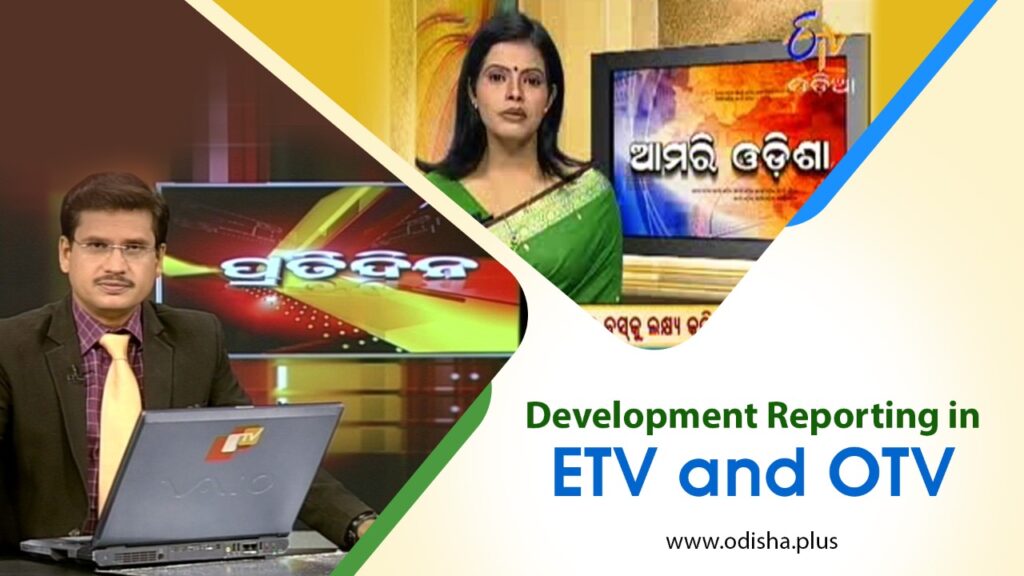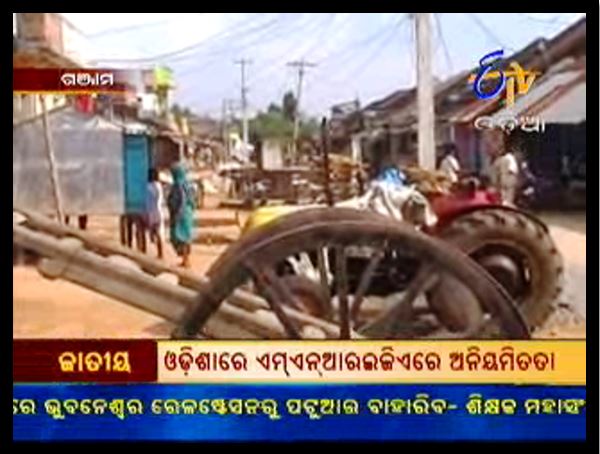Dr. Fakir Mohan Nahak
THE TELEVISION NEWS INDUSTRY IN ODISHA HAS GONE THROUGH A PROGRESSIVE JOURNEY IN THE PAST TWO DECADES. IN THIS SERIES DR. FAKIRA MOHAN NAHAK PRESENTS THE MEDIA HISTORY BLENDED WITH HIS CLOSE OBSERVATION ON THE FAST-CHANGING INDUSTRY.
Television is a magic multiplier. It is such a mass medium that helps a message reach to millions of people at a time and multiplies its value. Television was used by a number of media researchers as an effective medium to disseminate a message to the masses. Through its content, it can create an impact in the society and bring positive changes as well. It can help in attaining development in the society. This is the reason behind using television for the development communication purpose.

This author as a researcher had conducted a comparative study between ETV Oriya and OTV to ascertain their role in developmental communication in the state. One of the major objectives of that study was to do a comparative analysis and figure out how much emphasis was given by both the channels to developmental stories and developmental reporting in the prime time news bulletin. For this purpose, the 7pm “Amari Odisha” bulletin of ETV Oriya and 7pm “Pratidin” bulletin of OTV were considered. The author analyzed a total number of 184 news bulletins of both the channels that were telecast between 1st October 2010 and 31st December 2010. It was not an easy task to record the downlink bulletins from the transmission for three consecutive months.
The author used the method of content analysis to find the extent of development reporting in terms of frequency, space, approach and direction of coverage in the prime time news bulletins of ETV Oriya and OTV. The universe of the study comprised of all the news items aired in the 7P.M bulletins during the period of October 2010 to December 2010 in the two channels- ETV Oriya and OTV. The unit of analysis was each and every news item aired during the slot taken under the study. Space for all news items was noted in seconds.
Monitoring the bulletins and noting the duration of each and every news story in seconds was the first step in this time-consuming process. The next step was to segregate the development news content into different categories. The whole study of development communication was sub-divided into 14 content categories viz. agriculture, health, education, road-transport-and-communication, industry-and-employment, administrative reforms, communal harmony, women empowerment, children’s issues, preservation of culture, environmental protection, scientific temperament, human rights and food security. The content of each and every news item aired in the two bulletins were examined to find whether they were communicating any of these content categories or not. Let’s discuss about individual categories in detail.

- Agriculture: This category comprised of news stories that contained issues related to food production, cultivation, harvesting and irrigation, availability of seeds, fertilizers and subsidies, calamities that affect agricultural output, farmers’ woes, and distress sale of crops. It also covered the establishment of institutes of agriculture, animal husbandry and other allied activities which ultimately boosts agriculture as a whole.
- Health:Any news related to affirmative action for patients of deadly diseases like AIDS, spreading of epidemics, state of healthcare, availability of safe drinking water, conditions of hospitals, doctors’ negligence, creation of new facilities and government’s stringent action against absentee doctors came under this category.
- Education: Issues related to student-teacher ratio, supply of text books, state of school/college libraries, availability of approach roads to schools, quality of teaching, students dropouts, quality of food in mid-day meal, healthy environment for studying at institutes of higher learning (ragging issues), reforms in curriculum and exam, steps taken to improve enrolment and make education more inclusive.
- Road, Transport and Communication: Construction of new roads, expansion of road and rail network, delay in implementation of infrastructure projects, eviction of encroachments, connectivity issues.
- Industry and Employment: This category included news related to employment opportunities for rural as well as urban youth, skill-development programs for youth, both positive and distress stories related to MNREGS, torture of migrant laborers, issues related to proposed industries, assessing corporate social responsibility of industrial units, plight of displaced people. This also included news stories covering the establishment of small and medium scale industries in backward regions that ensures employment without creating large-scale displacement.
- Administrative Reforms: Actions pertaining to general interests of the state’s people, new codes or rules for all government offices and employees for better human resource management and enhance the efficiency of general administration. It also included news associated with plugging the holes in administration which facilitates in fixing responsibilities and finding the missing link and steps to check arbitrary behavior of microfinance companies.
- Communal Harmony: Case studies highlighting amity among different religions, cases of role-reversal e.g. people from one religion performing the role (e.g. priest) in another religion and vice versa, inter-communal dining, and lasting solution to longstanding communal disputes.
- Women Empowerment: Specific issues related to gender equality, positive discrimination in favor of women, statutory initiatives to ensure women’s safety at work places, women’s movement, news stories questioning the social stereotyping of gender, stories lauding the achievements of ordinary women and SHGs.
- Children’s Issues: Stories acknowledging children’s fundamental rights, plight of children in conflict areas, children as refugees, saga of child domestic helps and child labors working elsewhere, physical and mental abuse of children, military/ Maoist use of children, child trafficking , Rescue and rehabilitation of destitute children etc, children’s festivals, programs for overall development of children.
- Preservation of Culture: Activities that help in preservation and promotion of classical and folk music, dance, art etc. Conservation of historical monuments and heritage sites. Reporting festivals that are unique to Oriya culture and tradition and create ample opportunity for family and community get-together and enhances emotional well-being of the population.
- Environmental Protection: Public hearing on environmental implications of mega projects, state pollution control board’s reprimand to errant industrial units, action taken to punish the offenders of environmental laws and regulations. Un-thoughtful cutting of trees for any purpose without planting new trees, cases of man-animal conflict where lives of both are adversely affected. Measures taken to address food and habitat issues of wild animals. Stories on threat to biodiversity. News items reflecting the growing uncertainties in the livelihood of people facing extreme weather conditions.
- Scientific Temperament: News items popularizing science and scientific temperament. Stories that question the relevance of certain ritualistic practices like animal sacrifice. Reporting the repercussions of black magic, sorcery, human sacrifice in the quest of hidden treasure and unscientific ways of nabbing thieves. Diving deep into the stories related to mass hysteria or psychological issues that are often mistaken as acts of spirits, ghosts, aliens etc.
- Human Rights: Human beings’ right to live with dignity, issues related to trials and tribulations of physically and mentally challenged people, disproportionate punishment to any convict, police excesses, custodial deaths or extra-judicial killings, caste violence leading to further marginalization of Dalits.
- Food Security: Issues related to starvation deaths, availability of food grains for every individual, malpractices and pilferages in public distribution system (PDS), price hike that affects the quality of life of consumers, inadequate storage facility that leads to damage of food grains.

Analyzing the content of 184 news bulletins from prime time at the minute level was the most challenging task of the whole study. There were some interesting findings. Categorizing the whole developmental communication into14 categories wasalso equally difficult. There were couple of interesting findings as well. Let’s continue to discuss further on this in the next issue.
(Dr. Fakira Mohan Nahak is a writer and former media professional. He is currently working as the Head of the Department of University Institute of Media Studies, Chandigarh University at Mohali, Punjab. Views are Personal)
Tags: #developmentcommunication #agriculture #health #education #roadtransportandcommunication #industryandemployment, #administrativereforms #communalharmony #womenempowerment #childrenissues #preservationofculture #environmentalprotection #scientifictemperament #humanrights #foodsecurity



























